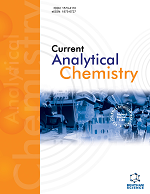
Full text loading...
We use cookies to track usage and preferences.I Understand

L-cysteine (L-Cys) and homocysteine (Hcy) are the most representative of biothiol, which exist widely in organisms. L-Cys is one of the essential amino acids, which can be absorbed from protein-rich food and plays a considerable role in various physiological processes. Hcy is a vital intermediate in normal mammalian metabolism of methionine but does not occur in the diet. Therefore, it is significant to exploit a rapid and sensitive strategy to measure L-Cys and Hcy.
Herein, we designed an “on-on” fluorescent platform for detecting L-Cys and Hcy with gold nanoclusters (AuNCs) as probes. During the sensing process, cadmium ions (Cd2+) acted as mediating substances to connected AuNCs and L-Cys (or Hcy), and triggered aggregation-induced emission (AIE) effect.
The linear ranges achieved with fluorimetry of L-Cys and Hcy were 0.1-10.0 μM and 0.1-20.0 μM, respectively. Moreover, this fluorescent probe was successfully used to determine the L-Cys concentration in actual samples, and showed excellent recovery.
Furthermore, the mechanism for sensing L-Cys and Hcy has been exhaustively investigated.

Article metrics loading...

Full text loading...
References


Data & Media loading...
Supplements